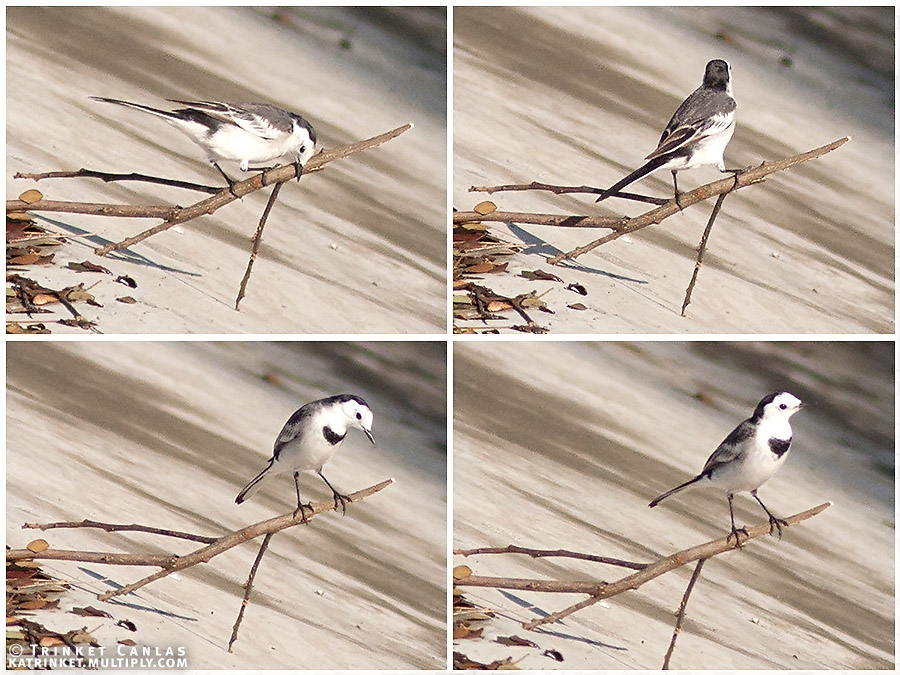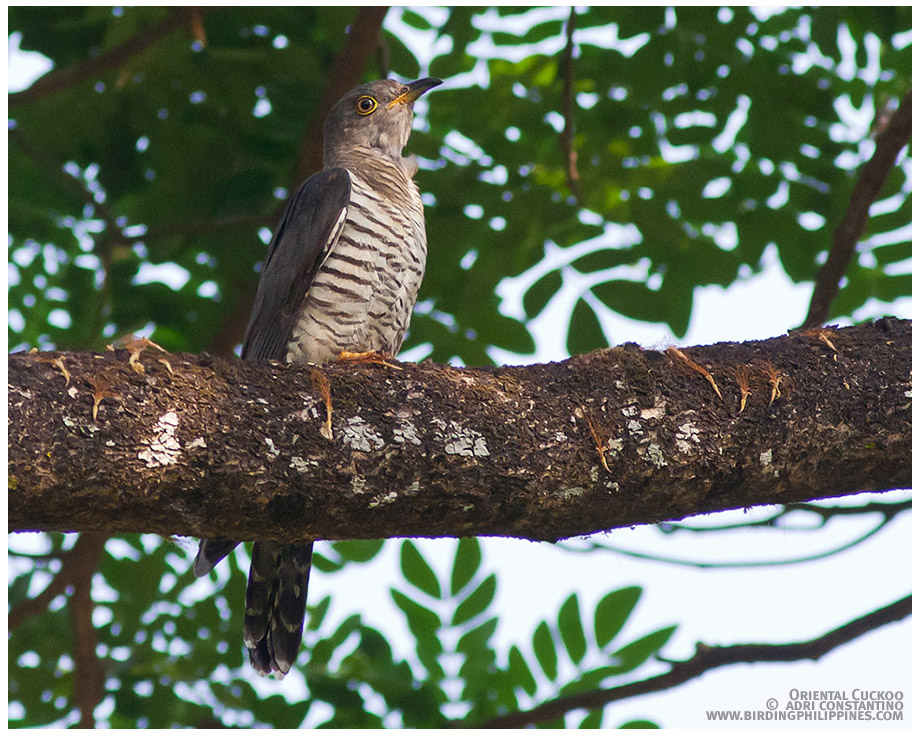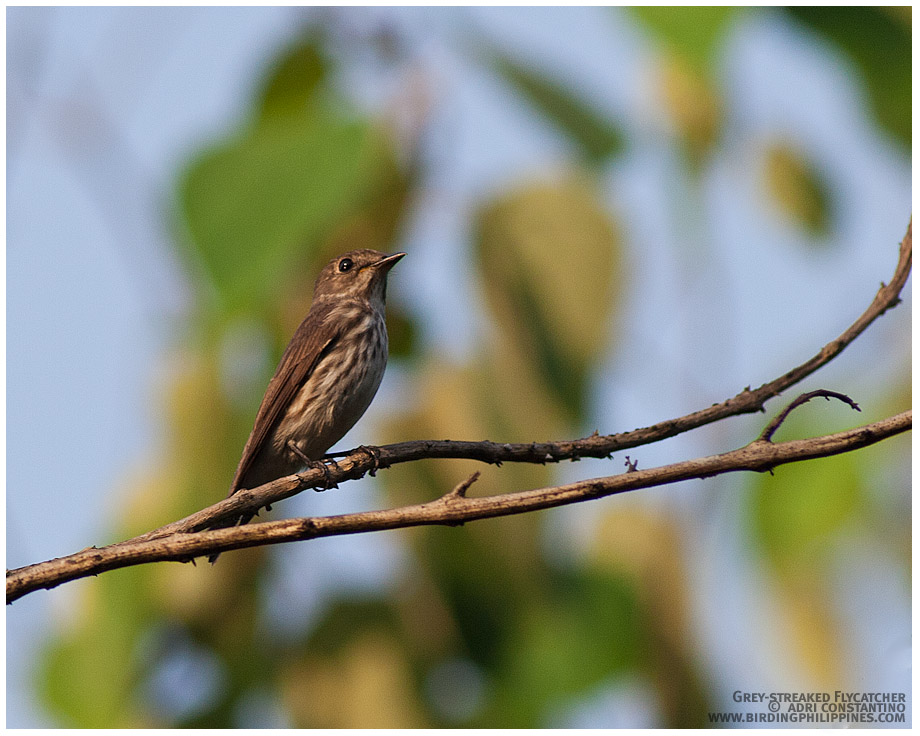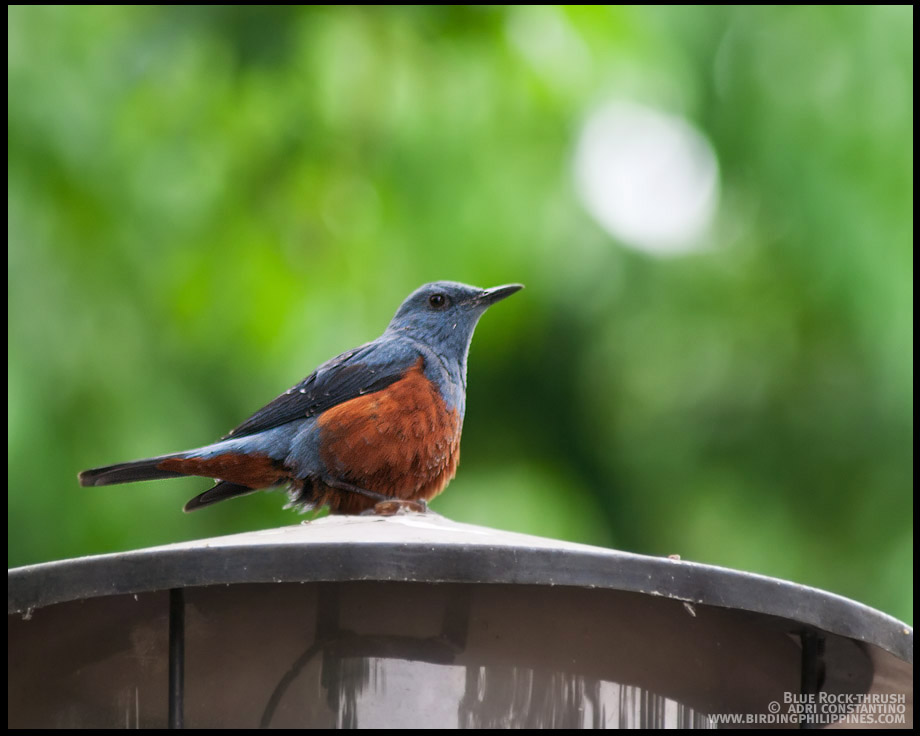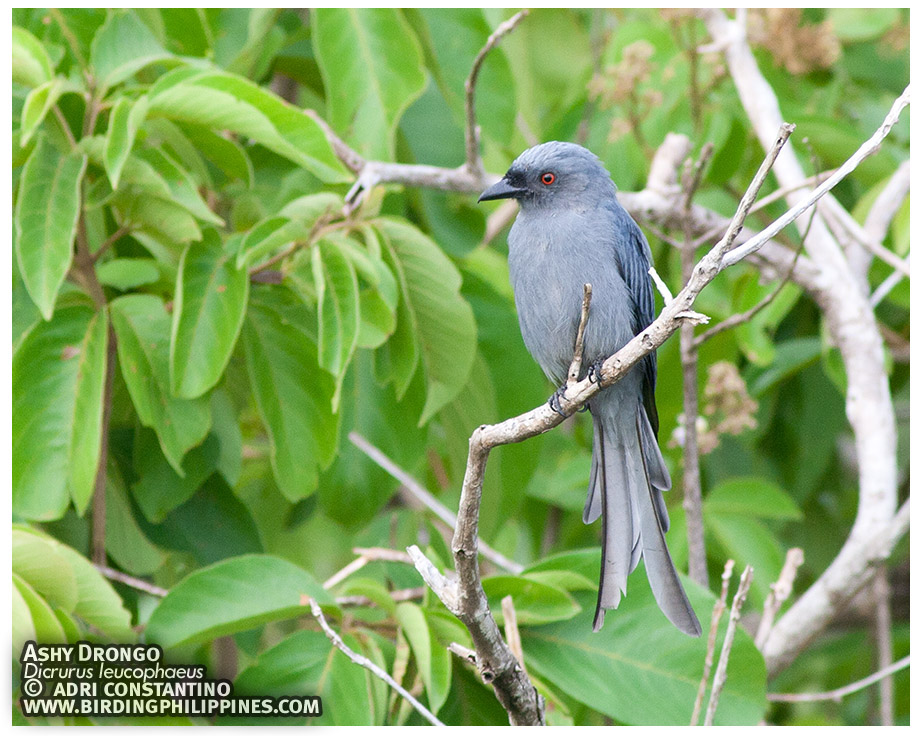
Trinket Constantino / www.birdingphilippines.com
| :: Birding Adventure Philippines | Guided birdwatching tours anywhere in the Philippines ::
Guided Birding and Nature Tours to the Philippines

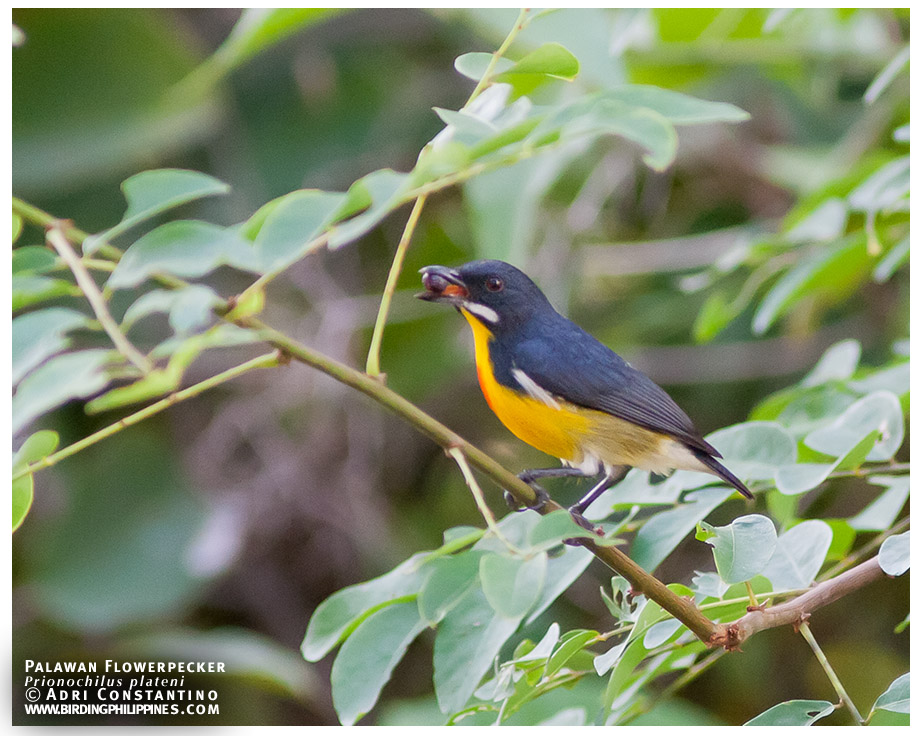 This is a high elevation Mindanao endemic - Olive-capped Flowerpecker and can be found only in forests above 900 meters. The most reliable site for this flowerpecker is in Mt. Kitanglad Mountain Range, home of the mighty Philippine Eagle.
This is a high elevation Mindanao endemic - Olive-capped Flowerpecker and can be found only in forests above 900 meters. The most reliable site for this flowerpecker is in Mt. Kitanglad Mountain Range, home of the mighty Philippine Eagle.
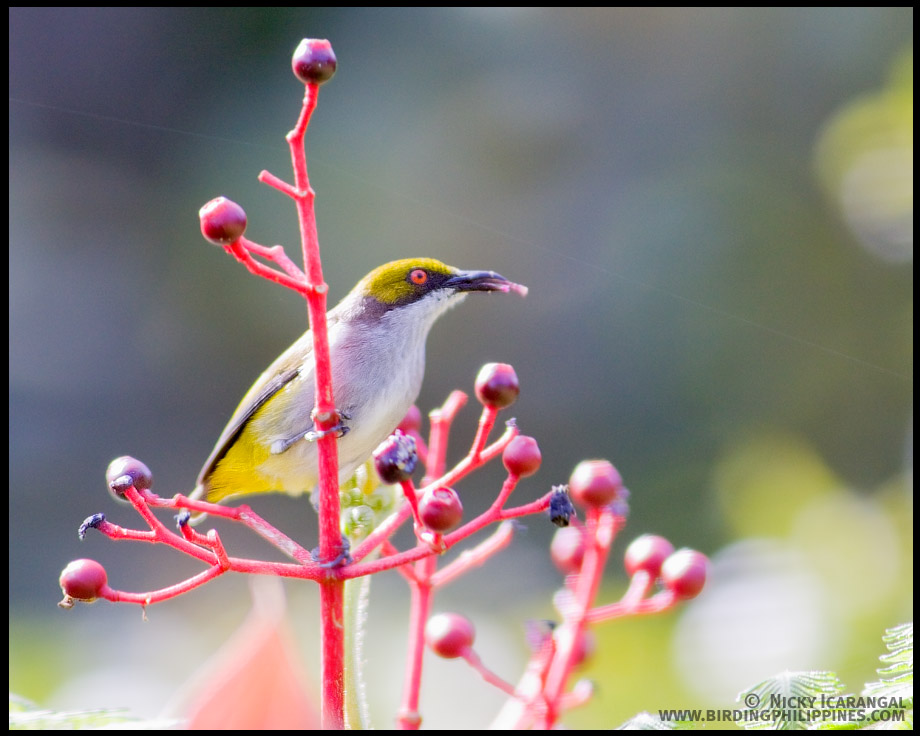 Then this is probably the most common endemic flowerpecker - Red-keeled Flowerpecker. It ranges all over the country except Palawan and is believed by field biologists to bully the ultra-rare Cebu Flowerpecker in Cebu.
This is a Buzzing Flowerpecker, a fairly drab-looking frugivore that gives a continuous high-pitched buzzing call. It ranges Luzon, Mindanao, Samar and Leyte and Bohol.
This picture is from Mindanao ...
Then this is probably the most common endemic flowerpecker - Red-keeled Flowerpecker. It ranges all over the country except Palawan and is believed by field biologists to bully the ultra-rare Cebu Flowerpecker in Cebu.
This is a Buzzing Flowerpecker, a fairly drab-looking frugivore that gives a continuous high-pitched buzzing call. It ranges Luzon, Mindanao, Samar and Leyte and Bohol.
This picture is from Mindanao ...
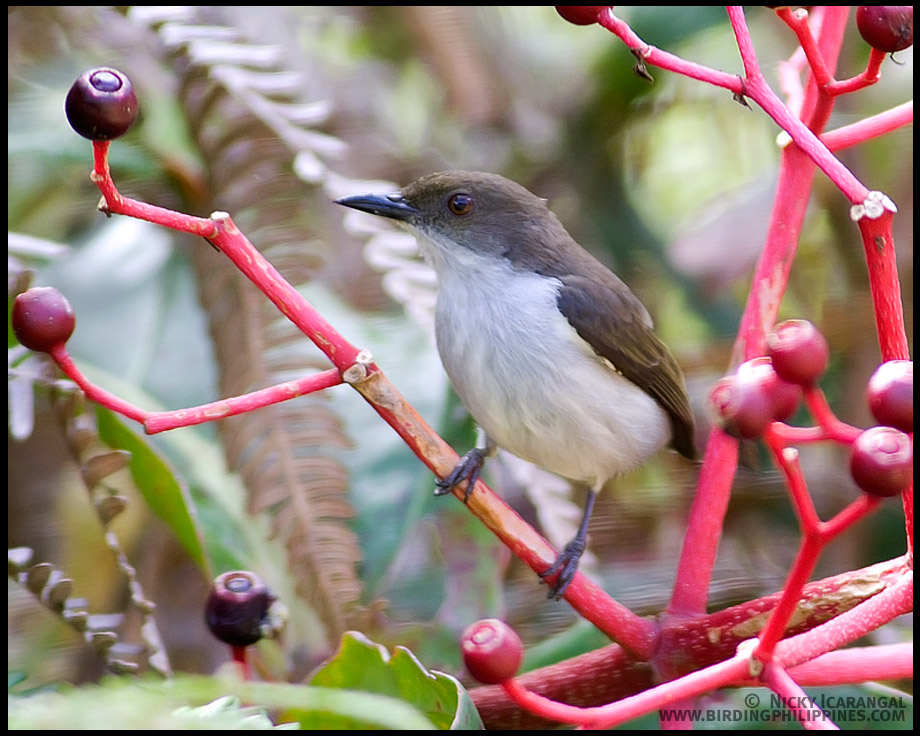 while this video is from Mt. Polis in Luzon. Notice the difference.
Then, there is this Pygmy Flowerpecker, the smallest flowerpecker in the Philippines. It is characterized by its very thin bill, narrow white throat and can be found all throughout the Philippines except in the island of Panay.
There are a few more endemic flowerpeckers like this Flame-crowned Flowerpecker (left) and this Bicolored Flowerpecker (right). The Flame-crowned Flowerpecker ranges in the high elevation mountains of Luzon and Mindanao. The one on the left was taken in Mt. Polis, Luzon while the Bicolored Flowerpecker is a lowland flowerpecker distinguished from the Red-keeled by its very stout bill.
while this video is from Mt. Polis in Luzon. Notice the difference.
Then, there is this Pygmy Flowerpecker, the smallest flowerpecker in the Philippines. It is characterized by its very thin bill, narrow white throat and can be found all throughout the Philippines except in the island of Panay.
There are a few more endemic flowerpeckers like this Flame-crowned Flowerpecker (left) and this Bicolored Flowerpecker (right). The Flame-crowned Flowerpecker ranges in the high elevation mountains of Luzon and Mindanao. The one on the left was taken in Mt. Polis, Luzon while the Bicolored Flowerpecker is a lowland flowerpecker distinguished from the Red-keeled by its very stout bill.
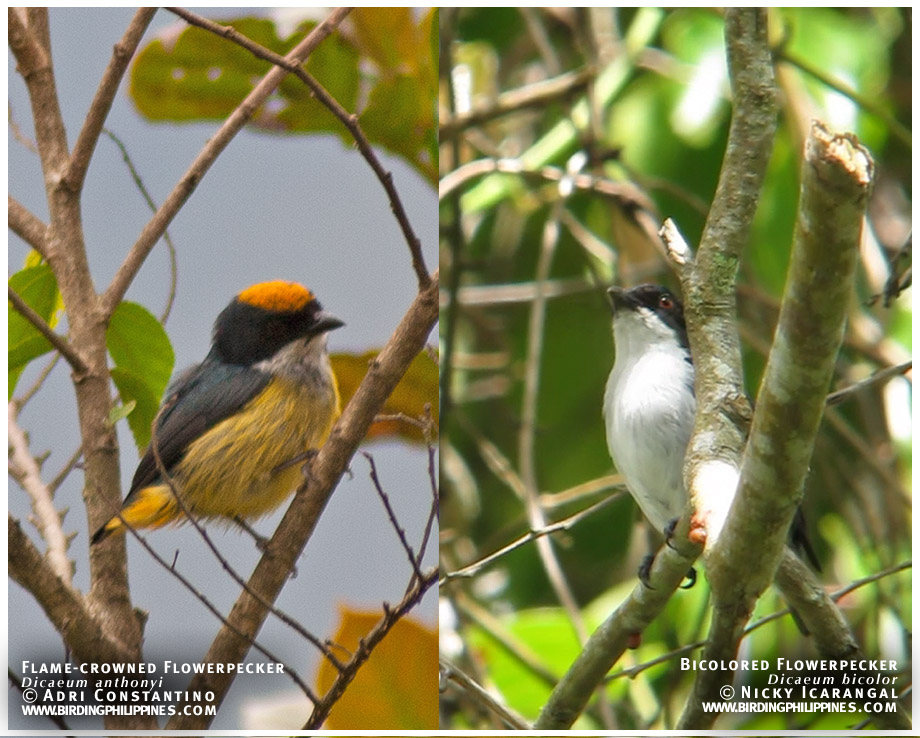 Other endemic flowerpeckers include the Striped Flowerpecker - similar to a Grey-streaked Flycatcher but this one wags its tail sideways - found in most islands through the Philippines; the uncommon lowland fruigivore Olive-backed Flowerpecker - found in Luzon, Mindanao, Samar and Leyte; the ultra rare Cebu Flowerpecker - found only in the remaining forests of Cebu, a small island in Central Philippines; the highly localized Whiskered Flowerpecker found only in the highlands of Mindanao; Scarlet-collared Flowerpecker from Mindoro and Visayan or Black-belted Flowerpecker, a split from Red-keeled Flowerpecker, found in Negros.
There are two non-endemic flowerpeckers: this gorgeous Orange-bellied Flowerpecker ranging from most Philippine islands
Other endemic flowerpeckers include the Striped Flowerpecker - similar to a Grey-streaked Flycatcher but this one wags its tail sideways - found in most islands through the Philippines; the uncommon lowland fruigivore Olive-backed Flowerpecker - found in Luzon, Mindanao, Samar and Leyte; the ultra rare Cebu Flowerpecker - found only in the remaining forests of Cebu, a small island in Central Philippines; the highly localized Whiskered Flowerpecker found only in the highlands of Mindanao; Scarlet-collared Flowerpecker from Mindoro and Visayan or Black-belted Flowerpecker, a split from Red-keeled Flowerpecker, found in Negros.
There are two non-endemic flowerpeckers: this gorgeous Orange-bellied Flowerpecker ranging from most Philippine islands
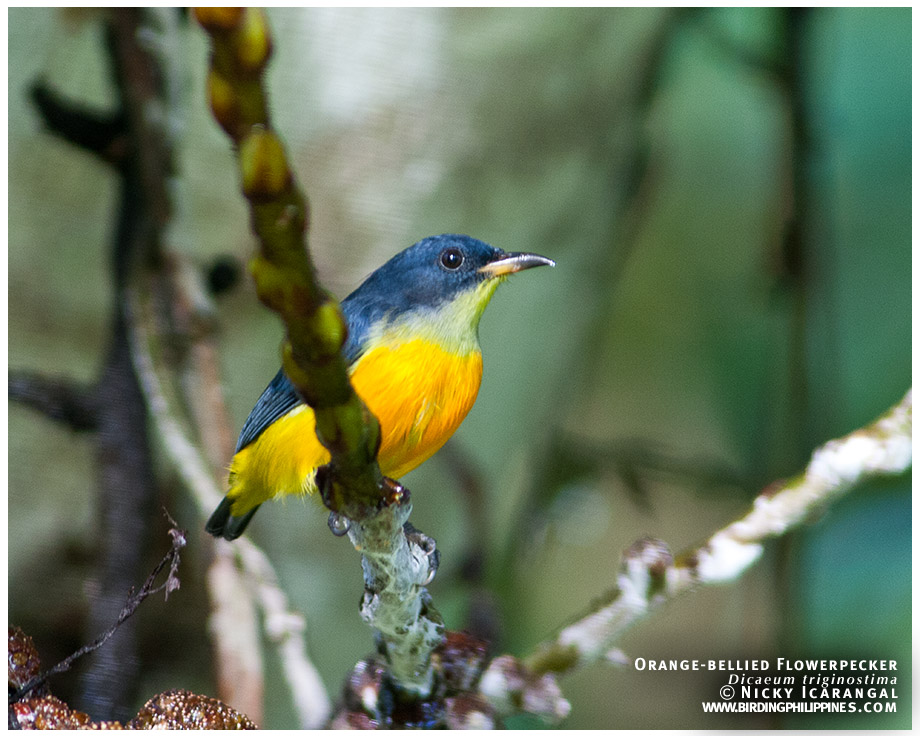 And this Fire-breasted Flowerpecker from high elevation mountains of Luzon and Mindanao.
And this Fire-breasted Flowerpecker from high elevation mountains of Luzon and Mindanao.
 So next time you go out birding, make sure you pay attention to these small flowerpeckers, they maybe your next tick! 🙂
Next post, more videos from this excellent new site in Northern Luzon: Camp Sawa.
So next time you go out birding, make sure you pay attention to these small flowerpeckers, they maybe your next tick! 🙂
Next post, more videos from this excellent new site in Northern Luzon: Camp Sawa. 